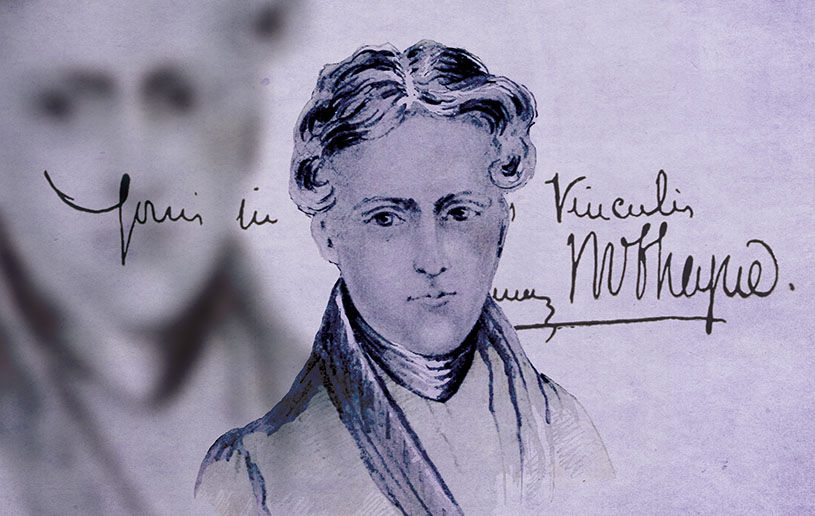Signposts to Jesus (2)
- Rev. Maarten Kuivenhoven

- Dec 19, 2019
- 4 min read
Updated: Jan 9, 2023
Read: John 20:30–31 and John 2:1–11
The Fullness of Jesus
Every sign that we read and interpret points out a greater reality or some danger. Arrow signs point out which direction the sharp turn takes so drivers avoid going over an embankment. A rest area sign points to the place where you can stop, take a break, and rest. The miracle that Jesus performs in John 2:1–11 operates on a similar level. It points out a problem with humanity, but it also points more importantly to the fullness of Jesus. This fullness of Jesus is magnified as He attends the wedding feast at Cana and changes the water into wine. The fullness of Jesus is put into the larger context of His redemptive work as He rebukes His mother and as details of the miracle come to light. As you read, follow this sign to the fullness of Jesus and, by doing so, avert the danger of relying on your own emptiness of works or self-sufficiency.
The fullness of Jesus is highlighted against the problem of the emptiness of the wine vessels that were used at the wedding. The wine had run out at the wedding, and this would reflect poorly upon the groom who was supposed to ensure enough wine for the seven-day feast. It would actually bring shame upon him. What were they to do with the emptiness of the wine vessels? They bring the problem to Jesus. Mary, the mother of Jesus, brings the problem to Jesus. As we read in verse 3, she tells Him that they’ve run out of wine. The groom is powerless, but Jesus is present. This emptiness, however, points to a greater spiritual reality that is operating behind this miracle. There is the spiritual reality of your and my emptiness. You and I are called to feast on Christ in the gospel, but the sad reality is that you and I are empty vessels by nature. Have you come to that realization in some measure—that you are an empty vessel before the overwhelming fullness of Christ? In order to be filled with Christ, you need to be emptied of yourself. This is a hard lesson to learn, but one that Christ will persist with. It is something He teaches by degrees. The encouraging part of this narrative is that you can and must bring your emptiness to Jesus—the only proper place to bring your emptiness. Will you bring it to Him or continue in the driver’s seat of life, ignoring this sign to your peril?
Notice what happens as Mary brings this serious problem of lack and emptiness to Jesus. With the utmost respect, Jesus tells Mary in verse 4 that He is on His Father’s timetable by saying, “Mine hour is not yet come.” This is a reference to His hour of suffering and death. In essence, Jesus is saying that the lack of wine at the wedding is part of the puzzle that will picture His suffering and glory. He implies that He will take ownership of the problem at the wedding, but that there are far more important and glorious realities operating behind this sign than at first meets the eye. Jesus shows His real and true humanity by sharing in the joy of the bridal couple. He is present there to affirm the goodness of marriage between one man and one woman. It is no coincidence that the beginning of the Gospel of John mirrors Genesis 1–2. But Jesus is present at this wedding as the Son of God to share in the shame of the groom. He is there to show that there is a wedding coming which is far more glorious where He will fill every guest with the overabundance of the wine of His presence and grace (Isa. 25:6). Where are you going with all your emptiness? Is it to Jesus and His fullness? Only He can fill you.
That only Jesus is able to fill us is clear from the verses that follow and the display of Jesus’s power and glory to turn the water into wine. Mary bids the servants to do whatever Jesus tells them to do—this is an act of faith. Jesus tells them to get the jars that were used for ceremonial cleansing and to fill them to the brim with plain water. These jars are symbolic of the Old Testament’s rituals of cleansing, which pointed to the reality of Christ’s cleansing blood. This is exactly what Jesus is demonstrating here. The old system of works is empty and void of power, but Jesus has come. He is the reality of what the Old Testament had spoken about, and now He comes in His creative power to turn the water into wine. The governor of the feast exclaims that this wine is the best. This is contrary to tradition and expectations. And isn’t that so like Jesus? He comes and does what is contrary to tradition and expectation. He takes emptiness and gives His fullness. He takes our worst and gives His best. This was all designed to show forth the glory and fullness of Christ. More glorious than the shadows of the Old Testament types and figures! He shows forth His glory as verse 11 says. He has come—the Best has come and more is coming. His glorious fullness is on display for sinners! Where will you be satisfied? His disciples followed the sign and believed on Him. Will you? Stop trying to live with your emptiness and be satisfied in the fullness of Jesus.




